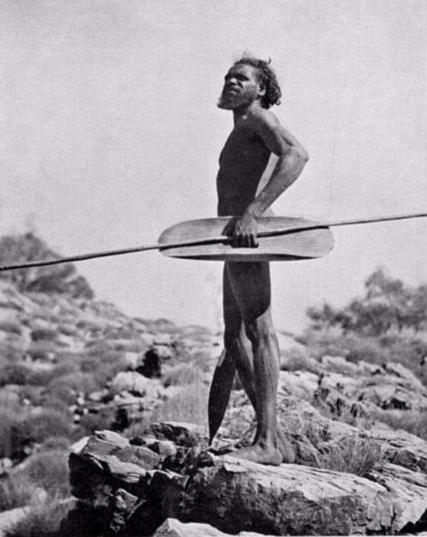In 1788, Britain colonially started civilizing a pre-Australian neolithic aboriginal culture out of barbarism, rape and pedophilia
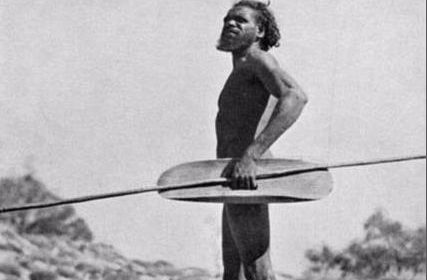
It would take generations.
Pre-1788 patriarchal Aborigines had imagined a lush Dreamtime paradise of hunter gathering – berries, seeds, barra, roos, goannas, and chasing Aboriginal women and their kids.
Then the British First Fleet sailed into Port Jackson, embedded a white pole, hoisted the Union Jack and declared civilisation for their newly embraced land and natives downunder.
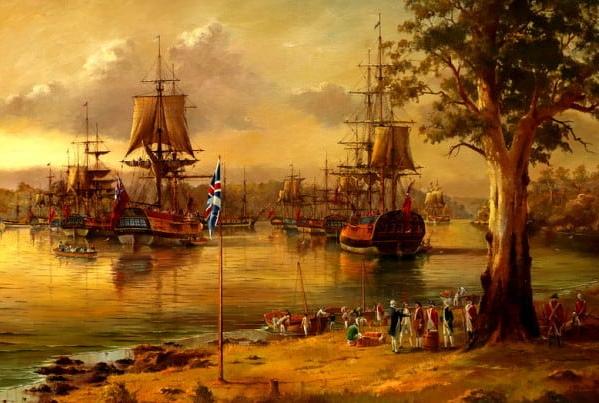 Origins of the Australian nation
Origins of the Australian nation
The Aboriginal women and kids had no comprehension. Yet the First Fleet from Saturday January 26, 1788 brought civilisation, feminism and childcare, despite then British pre-Victorian diseases and social imperfections.
Patriarchal Aboriginal men folk have resisted being civilized ever since.
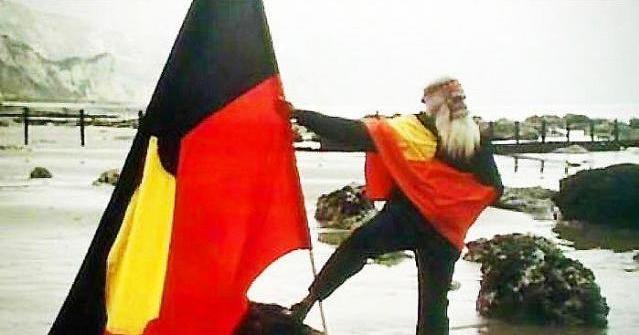 The Aboriginal Sit Down Flag: Not 60,000 years old, but just artwork of Harold Thomas from 1971 politicised.
The Aboriginal Sit Down Flag: Not 60,000 years old, but just artwork of Harold Thomas from 1971 politicised.
It is acknowledged that most Aboriginal men embrace Australian values. But then there persists this – government patronising policy.
Australian Government’s 2019-20 Budget delivering record funding (sit-down welfare) for Indigenous Australians:
The cross-portfolio investment in initiatives to improve outcomes for Aboriginal and Torres Strait Islander Australians include:
- The continued investment of $5.2 billion in the Indigenous Advancement Strategy (IAS).
- An additional $5.3 billion to support more than 224,000 Aboriginal or Torres Strait Islander students through the Indigenous loading component of our schools funding package (to 2029).
- $1 billion for Indigenous health through the Department of Health.
- $37.5 million to support better housing for residents of remote Indigenous communities in South Australia.
- $276.5 million for the Indigenous Youth Education Package to give more Indigenous students the support and mentoring they need through their secondary studies.
- $35 million to support initiatives to address drivers of violence under the Fourth Action Plan of the National Plan to Reduce Violence against Women and their Children 2010-2022.
- $2.5 million for the eSafety Commissioner as part of the Fourth Action Plan of the National Action Plan to Reduce Violence Against Women and their Children.The eSafety Commissioner will work with and assist Aboriginal and Torres Strait Islander women in communities across Australia to identify, report and protect themselves and their children form technology-facilitated abuse.
- $5 million towards regionally specific Indigenous Suicide Prevention Initiatives that are tailored to the needs of each community and led by local Indigenous Youth leaders.
- $35 million contribution to support securing tourism and jobs in Kakadu in Jabiru.
- $7.3 million to undertake a co-design process with Aboriginal and Torres Strait Islander Australians to detail options for Constitutional Recognition and a Voice to Parliament.
- $62.4 million over four years under the Skills Package to support participation in the labour market with VET,language, literacy, numeracy, and digital literacy skills assistance in remote communities.
- $36.4 million over five years for extending the Family Tax Benefit to families of ABSTUDY recipients aged 16 and over who study away from home.
- A $45.4 million commitment by the Commonwealth over four years for the Barkly Regional Deal to deliver a suite of short, medium and long-term initiatives to support economic and social development in the Barkly region.
- Regional deals in Hinkler, Albury/Wodonga and Adelaide will pursue opportunities for Indigenous Businesses and employment.
- Legal Assistance Package – annual increases to baseline funding for Legal Aid Commissions, Community Legal Centres and Aboriginal and Torres Strait Islander Legal Services with a single National Mechanism to be developed by the end of 2019.
- $5 million for getting kids to school through working community by community and school by school to invest in remote and very remote areas for projects that support and promote school attendance.
The $5.2 billion Indigenous Advancement Strategy includes targeted programmes and activities to ensure that Aboriginal and Torres Strait Islander Australians can take advantage of the opportunities the economy is creating. The Indigenous Advancement Strategy delivers on the ground funding in partnership with communities, ensuring children are attending school, adults are in employment and communities are safe.
The $200 million Indigenous Youth Education Package includes initiatives to support Aboriginal and Torres Strait Islander secondary school students. The package will fund additional secondary school scholarships and residential support for students who move away from home to study, and more student support through academy and mentoring projects.
Additionally, the Government is supercharging growth in the Indigenous business sector by expanding the Indigenous Procurement Policy (IPP) by introducing a new 3 per cent value target for all Commonwealth contracts to be awarded to Indigenous business within the next decade. The IPP has resulted in more than $1.83 billion in contracts to more than 1,470 Indigenous companies since it was created in 2015. In contrast fewer than 30 Indigenous companies won a paltry $6.2 million worth of contracts across the Australian Government in the 2012-13 financial year.
Through the Indigenous Business Sector Strategy we are already delivering the $90 million Indigenous Entrepreneurs Fund, $27 million for the Indigenous Entrepreneurs Capital Scheme, $55 million for the Business Development Assistance Program, $21 million for additional microfinance as well as a $20 million Performance Bond Facility.
Through our commitments to housing, better services,reducing the incidents of family and domestic violence,empowering Aboriginal and Torres Strait Islander Australians, driving investment in the Indigenous businesses, all through deeper engagement and more local decision making.
…etc,etc…welfare, welfare, welfare. Not a shovel and a plot, just a Centrelink account, effectively from conception. White Australians excluded of course.
Aboriginal Welfare Entitlement ‘culcha’
Descendants of Third World (neolithic) Australians (Aborigines) receive more per capita than descendants of subsequent Australians – that is, the ones who made and continue to fund the Australian nation.
Of the $650,000 descendants of Third World Australians, the Australian Government spends $33 billion of taxpayer wealth a year specifically on them, which is racist policy. They call it “Aboriginal Affairs”. That’s $50,000, or more than four times above Australia’s current official poverty line for a four person household.
What about just “Australian Affairs”?
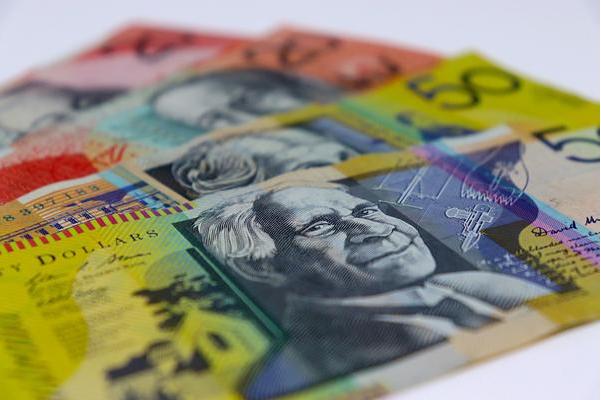 Australia’s current fifty dollar bill artwork was not intended to be Aboriginal sit down money just because Aboriginal David Unaipon was printed on its front. Unaipon’s prominence was always intended out of respect, recognition, reconcilation, and encouragement for Aboriginal Australians to earn a quid.
Australia’s current fifty dollar bill artwork was not intended to be Aboriginal sit down money just because Aboriginal David Unaipon was printed on its front. Unaipon’s prominence was always intended out of respect, recognition, reconcilation, and encouragement for Aboriginal Australians to earn a quid.
So bloody earn it!
Most government official forms have special Aboriginal and Torres Strait sections asking about “skin colour”. It’s so that special racist treatment is perpetuated for one exclusive race – free housing, free healthcare, free schooling, free education (loan exempt), free legal aid automatically as long as you have Aboriginality.
Race-based supremacy or what?
And the above funding statistics don’t include cost of Aboriginal crime upon Australians. Since 1989, the imprisonment rate of Aboriginal and Torres Strait Islander people has increased 12 times faster than the rate for non-Aboriginal people.
In December 2017 the rate was 2,440 prisoners per 100,000 adult Aboriginal population, compared to 216 prisoners per 100,000 non-Aboriginal population. More than eleven times the number of Aborigines are in prison than non-Aborigines, about 15,000 Aborigines in prison at around the country at any one time.
In the 2017, $3.1 billion of taxpayer wealth was spent on prisons and $500 million on community corrections, costing $110,000 per prisoner. With 15,000 Aborigines inside, that’s another $1.6 billion on top of the $33 billion a year, so Aborigines cost Australia taxpayers more like $35 billion a year.

